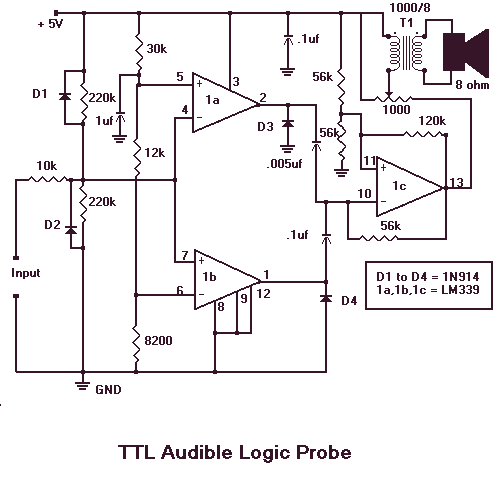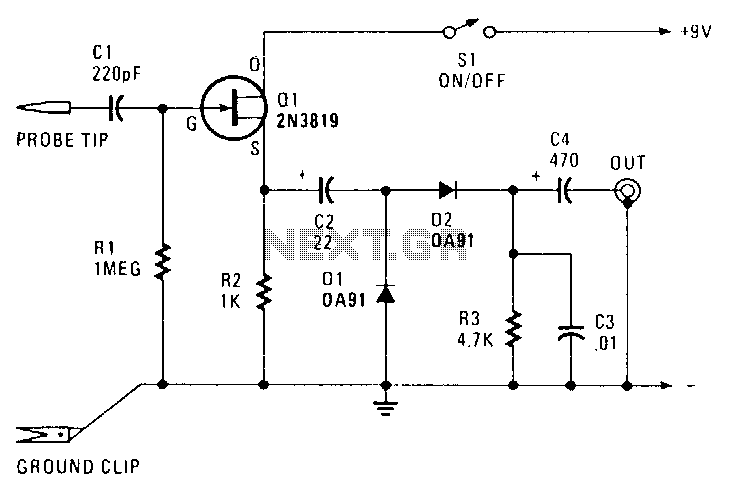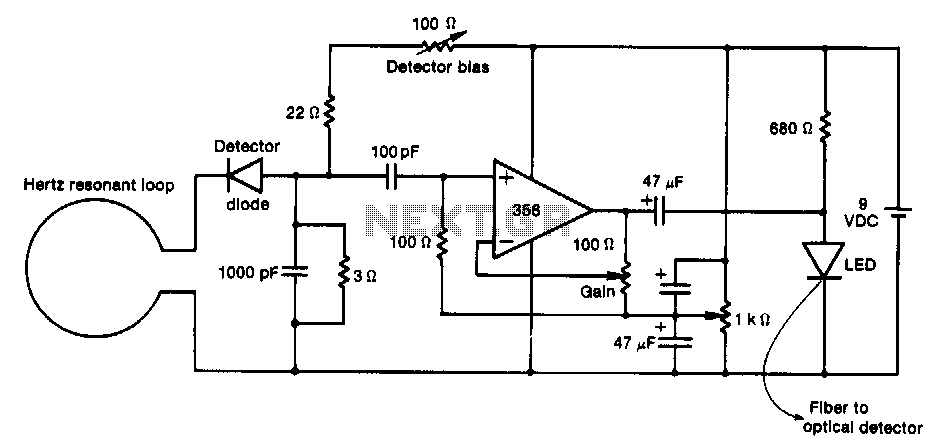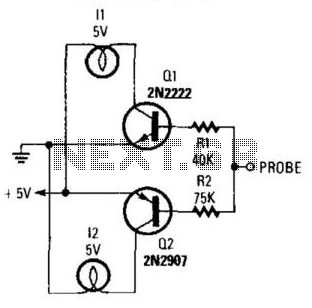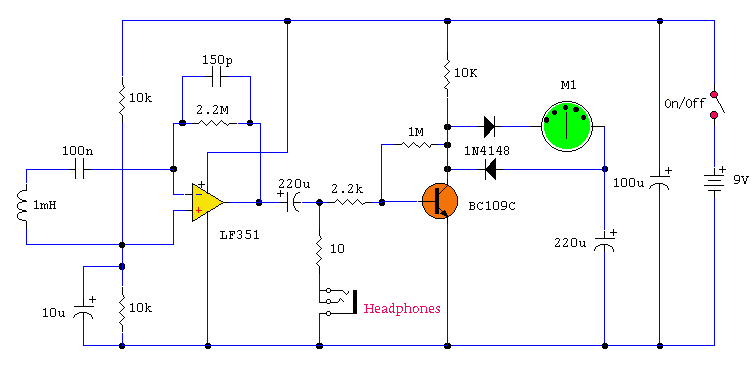
Rf probe for vom

This probe enables relative measurements of RF voltages up to 200 MHz on a multimeter with a sensitivity of 20,000 ohms per volt. The RF voltage should not exceed the breakdown rating of the 1N4149 diode, which is approximately 100 V.
The RF voltage probe is designed to facilitate accurate measurements of radio frequency voltages, particularly in applications where high-frequency signals need to be assessed. The probe's compatibility with a multimeter that has a high input impedance of 20,000 ohms per volt ensures minimal loading on the circuit under test, thereby preserving the integrity of the measurement.
The core component of this probe is the 1N4149 diode, which serves as a protective element. Its breakdown voltage of approximately 100 V is a critical specification, as exceeding this limit could lead to diode failure and inaccurate readings. Therefore, it is essential to ensure that the RF voltages being measured do not surpass this threshold to maintain the functionality and reliability of the probe.
In practical applications, this probe can be utilized in various fields, including telecommunications, electronics testing, and RF circuit design. Users should connect the probe to the RF source and the multimeter, ensuring proper calibration to achieve accurate voltage readings. The frequency range of up to 200 MHz allows for versatility in measuring different RF signals, making this probe an invaluable tool for engineers and technicians working with high-frequency electronic systems.
Overall, this RF voltage probe is an essential instrument for precise measurements in high-frequency applications, providing both reliability and ease of use when interfacing with standard multimeters.This probe makes possible relative measurements of rf voltages to 200 MHz on a 20,000 ohms-per-volt multimeter Rf voltage must not exceed the breakdown rating of the 1N4149—approximately 100 V.
The RF voltage probe is designed to facilitate accurate measurements of radio frequency voltages, particularly in applications where high-frequency signals need to be assessed. The probe's compatibility with a multimeter that has a high input impedance of 20,000 ohms per volt ensures minimal loading on the circuit under test, thereby preserving the integrity of the measurement.
The core component of this probe is the 1N4149 diode, which serves as a protective element. Its breakdown voltage of approximately 100 V is a critical specification, as exceeding this limit could lead to diode failure and inaccurate readings. Therefore, it is essential to ensure that the RF voltages being measured do not surpass this threshold to maintain the functionality and reliability of the probe.
In practical applications, this probe can be utilized in various fields, including telecommunications, electronics testing, and RF circuit design. Users should connect the probe to the RF source and the multimeter, ensuring proper calibration to achieve accurate voltage readings. The frequency range of up to 200 MHz allows for versatility in measuring different RF signals, making this probe an invaluable tool for engineers and technicians working with high-frequency electronic systems.
Overall, this RF voltage probe is an essential instrument for precise measurements in high-frequency applications, providing both reliability and ease of use when interfacing with standard multimeters.This probe makes possible relative measurements of rf voltages to 200 MHz on a 20,000 ohms-per-volt multimeter Rf voltage must not exceed the breakdown rating of the 1N4149—approximately 100 V.

